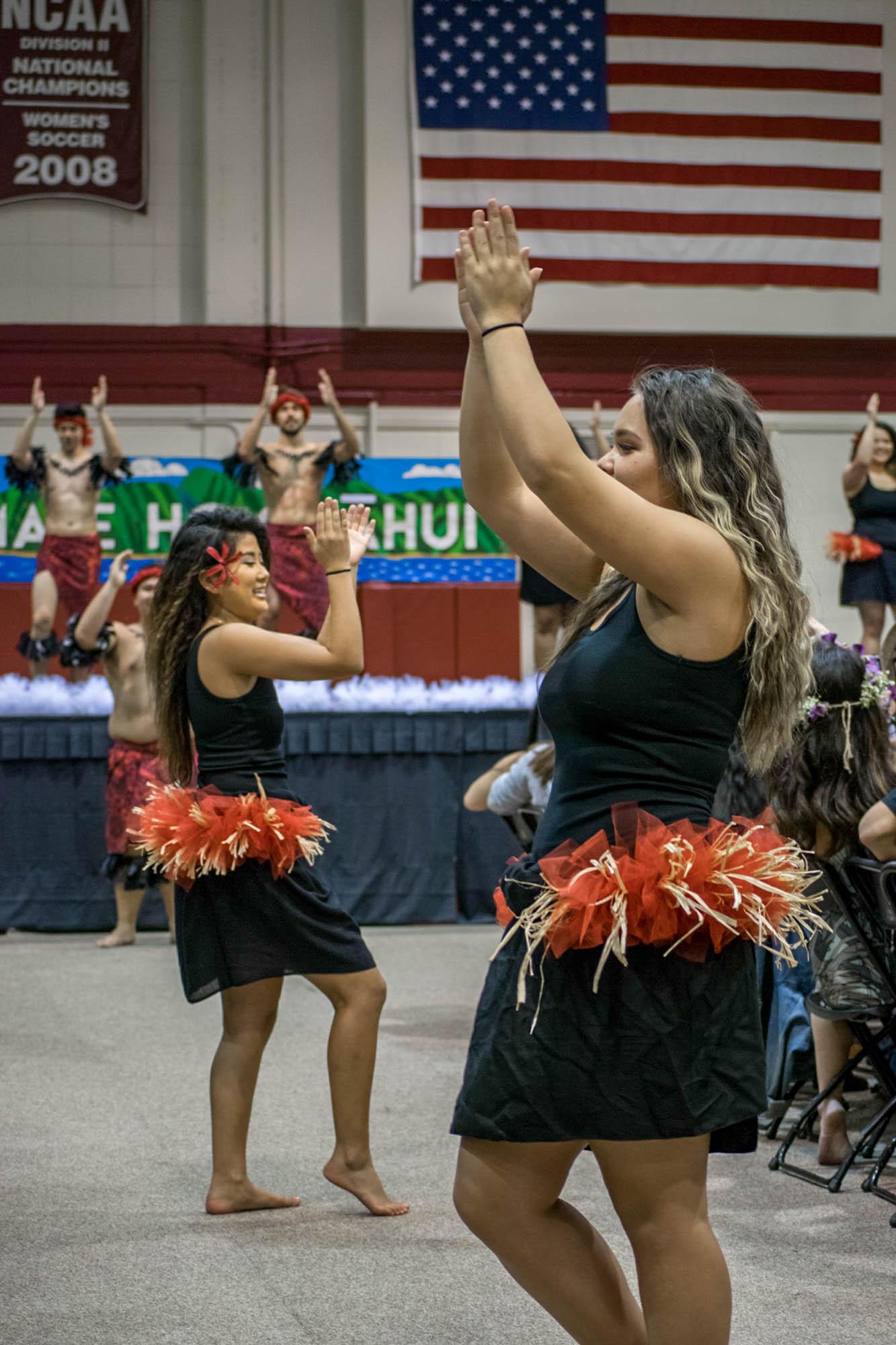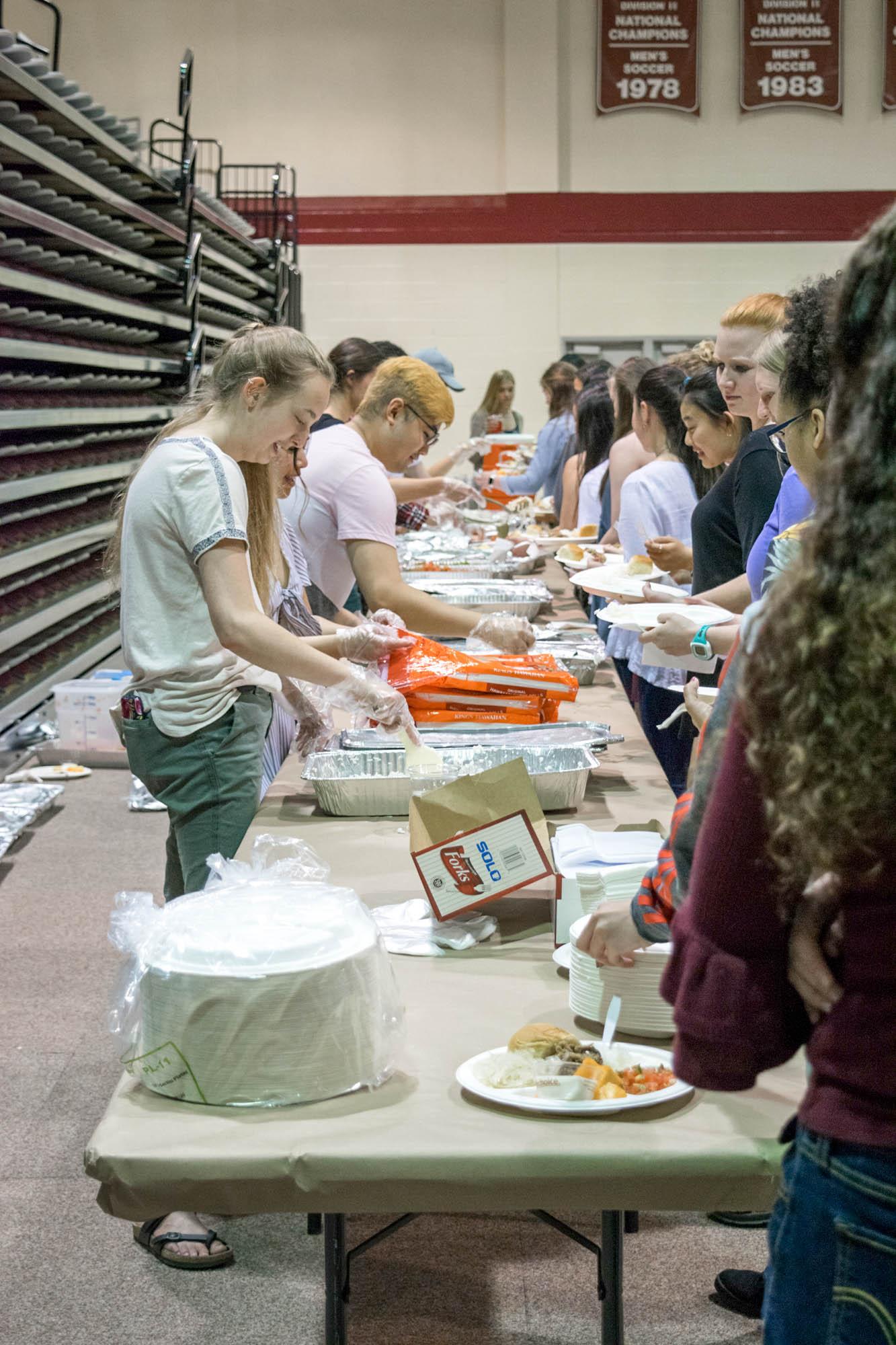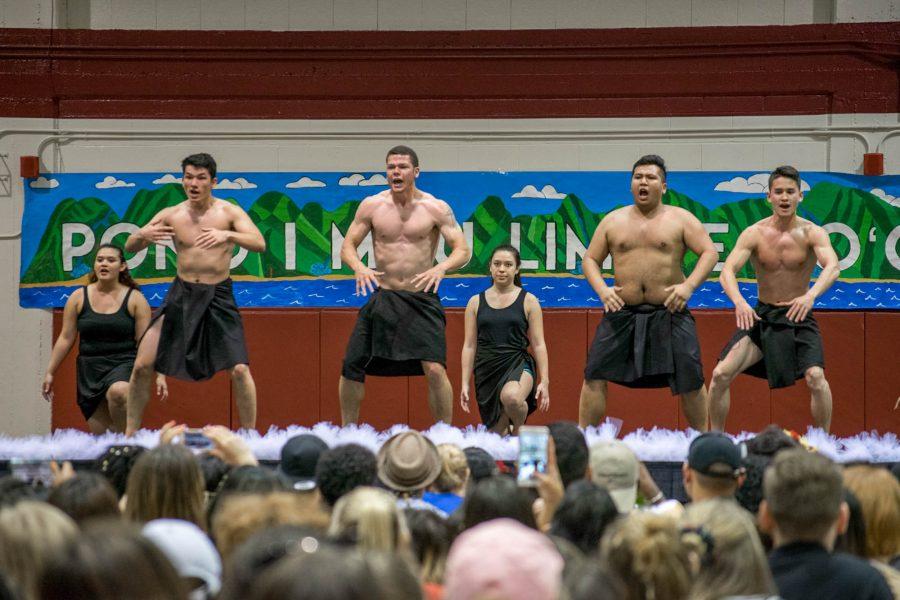
 By Rayne Heath
By Rayne Heath
An overwhelming sense of unity was present as eager students piled into Royal Brougham Pavilion. Student performers announced the beginning of the celebration by parading down the aisles of tables and creating music through the sound of conch shells.
On the evening of Sunday, May 6, students and families joined together to experience ‘Ohana ‘O Hawai’i Club’s annual lūʻau. This is a tradition that has continued for five years and is expected to continue for many years to come.
The lūʻau is near to the hearts of many students and gives an immersive experience into Hawaiian and Pacific Islander culture. Through food, song and dance, attendees were whisked into a tropical paradise.
With the audience seated in long, family style tables, Cross Crabbe began the evening with a prayer, which was spoken in both Hawaiian and English. The crowd enjoyed a freshly prepared traditional Hawaiian feast.
The strong smell of pork filled the room, stirring hunger among the large crowd. The meal included Kalua Pig, Chicken Long Rice, Lomi Salmon, Haupia and Li Hing Pineapple. These are all popular Hawaiian dishes, but were new tastes for many attendees.
The crowd’s attention was drawn back to the stage as performers glowed with pride. The performers had been preparing for this night since the beginning of the year and each element was strategically planned.
The night’s theme was “Pono I Mau Lima E Ho’olāhu,” which translates to “Many hands are needed to build a community.” This theme was incorporated throughout the production and even into the decorations.
The stage symbolized heaven and mountains while the tables below represented the land. The welcome area was representative of the sea. Each land division, or ahupua’a, requires a community to be sustainable.
Senior Nikki Moran and junior Jason Schmidt served as both emcees and performers for the night. Prior to each performance, the pair explained each song’s importance and role within Hawaiian culture.
The program began with Aijah Respicio and Rianne Masuda, who performed Hula Kahiko to “Mele Ho’ala Moku” by Keali’I Reichel. The chant repeats the phrase “e ala e,” meaning “awake.” The chant recognizes several beautiful locations that show their awakening beauty in the morning.
From the side of the room, Crabbe let out a loud shriek, which is one way that Hawaiians celebrate those on stage. After the song had ended, the entire audience erupted in screams and applause.
Next, Schmidt introduced “Pate Pate,” a song that comes from Tokelauan culture and celebrates the culture, music and dance of the Polynesian people.
Schmidt went on to explain that the performance is a Tahitian dance, coordinated by Isaiah Apisala and Crystal Senados. The dance was led by the Tahitian log drum and featured about fifteen students who were dressed in red and black and danced along to the quick beat.
At exciting moments in the show, the audience showed their approval with screams and claps to encourage the dancers. Performers even pulled audience members into the spotlight, inviting them to dance and engage in the ceremony.
Smiles and laughter filled the entire room as the dancing continued.
Crabbe, Moran and Kawehi Dodge performed a graceful dance to the mele, or chant, titled, “Precious Moments.” This song praises Christ for all he has done, demonstrating their love for him. Dressed in white, the three performers danced with heartfelt passion.
The ‘Ohana ‘O Hawai’i and Lū’au Board members then performed a Hula Auana to the melody “Lei Hala” to express feelings of gratitude. Schmidt announced that the Board members would like to, “Remind themselves of who they are and to never forget the importance of their culture, which is why they plan and share the lūʻau with the SPU community every year.”
The audience was filled with many family members who came from great distances to see their children perform. They were overcome with pride as they watched them sing and dance in front of their peers.
Student performers valued the opportunity to present their Hawaiian culture accurately and educate students on Hawaii’s vast differences from other states.
Junior Hayley Cheyney Kane said that the lūʻau “sheds light on what the Hawaiian culture really is, as opposed to what the Hawaiian culture is portrayed to be.”
Junior Maranata Ieremia Temese Kiuga (Nata) said, “I believe doing events like the lūʻau help share our culture with people who don’t know it and would like to learn it.”
As the night wrapped up, club president Moran delivered a heartfelt message. With tears streaming down her face, she explained to the audience just how much the tradition means to her.
“Thank you so much to those I have worked with for the past four years. Being part of this home away from home has truly made my college experience worth it.”















































































